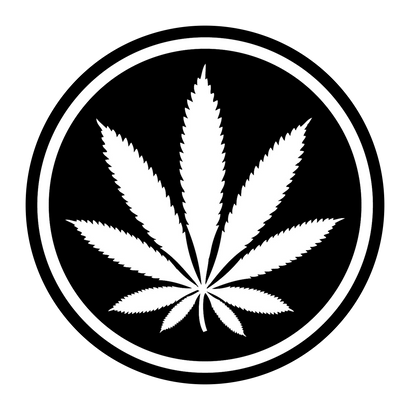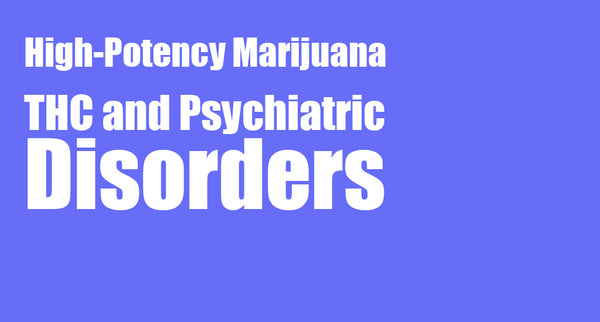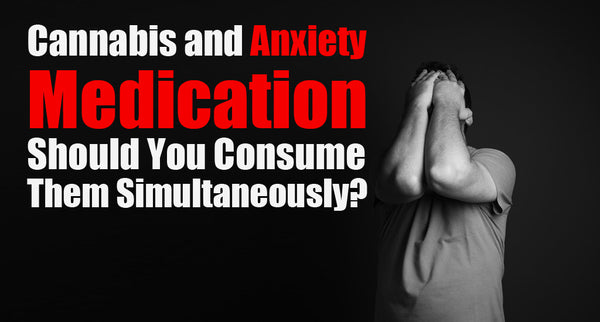Marijuana Tolerance, Withdrawal Symptoms, and 5 Tips to Take a T-Break
Do you remember the first time you got high? It felt really different, right? But as time has gone on, you might have noticed that you need more and more weed to feel that way again. If that's happening to you, a lot of people suggest taking a break from using weed for a while. It might not be the most fun thing, but it can help you use less weed and still have a good time when you use it.
If you're finding it tough to feel properly high unless you smoke a lot, like a gram or more, or use dabbing, it might be a good idea to take a break from weed. If you don't take a break, smoking can get expensive and not very good for your health and well-being. Taking a break can also be a chance to think about why you use marijuana, and what's the right amount for you to use each day. There's a saying that goes, "To enjoy using weed without overdoing it, it's important to also enjoy being sober sometimes."
In this blog post, we'll discuss the following subjects and questions:
- How does cannabis tolerance affect the brain?
- Why should you consider taking a break from cannabis?
- How Long Should Your T-Break Be?
- What are the usual symptoms during a tolerance break?
- 5 useful tips for a successful tolerance break
- Strategies to deal with sleeplessness during a break
A quick tip: I discovered that getting a vaporizer after your cannabis tolerance break can be quite beneficial. There's a distinction between the high you get from vaping and the one from smoking. Plus, after the break, your lungs will have cleared somewhat from the toxins in real bud smoke. Beginning with a vaporizer is a safer option and better for your lung health.
Related article: How to Choose a Vaporizer: Vaporizer high or Smoking high
1. How does cannabis tolerance affect the brain?
A recently published study on cannabis indicates that it could impact the production and release of dopamine in our brains. This study focuses on individuals labeled as "dependent on cannabis," who have used marijuana daily for numerous years. While marijuana tolerance can be a challenge, even for recent regular users, the lack of legal status in many places limits research. However, as legalization spreads, more thorough and reliable research is anticipated (so if your state considers legalization in the upcoming election, your vote could make a difference!).
Nonetheless, we do have knowledge on how to address increased tolerance. The most effective method to reduce tolerance and regain the ability to experience intense highs is through tolerance breaks. This approach is widely recognized, suitable for all, and doesn't require purchasing detox kits or taking time off work. To start your tolerance break, the essential step is to halt cannabis consumption, acknowledging that it might be easier said than done, but it's achievable!
2. Why should you consider taking a break from cannabis?
Frequent cannabis users might not immediately see the value in reducing their cannabis intake. For many, cannabis serves as their daily medicine. Nonetheless, there are several reasons why a cannabis consumer might find it beneficial or necessary to embark on a tolerance break:
1. Amplifying Effects: By lowering your cannabinoid threshold, you can achieve a more potent high using less cannabis. This not only saves money but also addresses the budgetary challenges of cannabis use.
2. Professional Considerations: Job seekers aiming to clear THC from their system, especially for mandatory drug tests like those conducted by MedSignals, may need an extended break. Flushing THC naturally can take time, particularly for frequent users or those using concentrated THC products.
Related article: How to Pass a Drug Test for Marijuana?
3. Legal Complications: Court orders, probation, or travel to regions where cannabis is restricted, like Thailand, might mandate a tolerance break. Regardless of your origin, cannabis legality varies widely.
4. Financial Savings: Maintaining a balanced cannabis expenditure can be a prudent financial decision. Treating cannabis consumption as a hobby rather than a necessity can help manage expenses.
Ultimately, a tolerance break offers consumers a fresh perspective on the healing potential of cannabis. This shift in viewpoint serves as a reminder that cannabis enhances life's experiences rather than dominating them. With a clear mind, consumers can reevaluate and revere the plant's potency.
Upon resuming consumption and experiencing the familiar effects of euphoria, creativity, and overall well-being, a renewed appreciation for this incredible plant emerges.
3. How Long Should Your T-Break Be?
Searching for a tolerance break calculator? I understand your quest to pinpoint the optimal duration for reclaiming your tolerance, and it's a quest shared by many in the cannabis community. This is a matter of intense debate, with no universally agreed-upon answer.
Two prevalent methods attempt to gauge residual THC levels. Some employ a THC half-life chart, which lacks accuracy. Others resort to store-bought drug tests—a pricey and unreliable approach. A clean drug test doesn't guarantee complete THC elimination; some might still be stored in fat cells, evading high-threshold tests. Not all tests are created equal, especially self-administered ones.
Sorry, but there's no scientifically proven formula for the right tolerance break length. Your unique metabolism, lifestyle, body composition, and potential cannabis dependence render your THC levels as individual as your fingerprint. If such an algorithm were devised, numerous apps would likely emerge to calculate and motivate t-breaks—I'd be the first to use one.
Given the absence of a sleek t-break app, we must rely on personal experiences and advice from friends or the internet. Your tolerance break might span a day, two, four, a week, a month, or even a year—it hinges on your requirements.
With this in mind, I've crafted a chart based on personal observations and fellow cannabis users' anecdotes. Your insights are valued.
Upon completing your t-break, we invite you to contribute to refining this chart. Kindly share your insights in the comments below, addressing:
- Your average daily consumption BEFORE the t-break.
- Duration of your t-break.
- Your average daily consumption AFTER the t-break.
4. What are the usual symptoms during a tolerance break?
Withdrawal symptoms exhibit variability based on an individual's dependency level and disposition. Mildly dependent smokers might encounter slight physical and psychological unease, such as headaches or restlessness.
However, those heavily reliant on cannabis might confront pronounced withdrawal effects like sweating, mild fever, chills, and even hallucinations. Despite being a plant, prolonged cannabis misuse can adversely impact mental and physical well-being, akin to other substances. Inducing dependency and then abruptly ceasing consumption disrupts bodily equilibrium, underscoring the importance of taking t-breaks to evaluate dependency.
Listed below are common cannabis withdrawal symptoms, contingent on usage frequency:
- Anxiety
- Depression
- Mood fluctuations
- Irritability and monotony
- Headaches
- Abdominal discomfort
- Appetite loss
- Nausea
- Vivid dreams (potentially enjoyable)
- Insomnia
Frequent cannabis use before bedtime might lead to sleep difficulties, as THC facilitates melatonin release, the sleep hormone. Mild insomnia can be managed with over-the-counter sleep aids, like a 2-mg melatonin supplement, often coupled with a soothing guided meditation.
At this juncture, you might be shaking your head, pondering the downside. Take heart—many have achieved this milestone, and so can you. Whether you opt for a complete break or substantially curtail intake, staying hydrated, exercising, eating healthily, and staying engaged prove beneficial. Although your receptors might clamor for cannabis several times daily, your t-break will foster resilience, preparing you to resume your "old" favored habit with renewed vigor.
Related article: 9 Tips to Fight your High Marijuana Tolerance Without Taking a T-Break
5 useful tips for a successful tolerance break
The following t-break suggestions are undoubtedly valuable—I can vouch for their effectiveness! The degree to which you can rekindle the sensation of your initial high hinges on the duration of your t-break. While the optimal length differs among individuals, you can reference the convenient chart above. Given the myriad strains available, each high has the potential to offer a distinct experience. Moreover, as marijuana effects vary from person to person, the unique side effects of a t-break will also differ. Here are practical tips to aid your journey:
-
Track and gradually wean yourself off. Monitor your consumption patterns and avoid an abrupt halt. Document your marijuana usage, allowing for a gradual transition. Rather than going cold turkey, which could lead to an unpleasant experience and potential ineffectiveness, adopt a measured approach. Over the course of a couple of weeks, progressively reduce your consumption by half a few times before initiating your cannabis break.
-
Put your glass away. This tip is quite straightforward: entrust your glass or vaporizer to a friend for safekeeping throughout your break. Turning it into a challenge to smoke will curb temptation, as having your devices within easy reach can be alluring. While we may trust our willpower, it can be challenging to resist initially. The adage "out of sight, out of mind" holds true!
-
Stay busy and get off your couch. Experience sober life again--it’s not as bad as you think. Here are some suggestions for you:
- Go to the gym.
- Hang out with interesting individuals, family, or friends. I can't emphasize "interesting individuals," enough. Someone boring will make you itch for a smoke. Remember, one of the main withdrawal symptoms is boredom and irritability, so hang out with interesting people that you genuinely enjoy.
- Go on a refreshing hike and meditate in nature.
- Invest more time into work-related projects (this is my favorite way to stay busy).
- If you want to stay at home and keep yourself busy, that’s fine. Read a thrilling book or watch an interesting documentary, or even better, one of those mind-bending psychological movies that you have to watch twice to truly understand. Discover a complicated and deep movie or TV show that you wouldn't be able to follow when you’re high, and enjoy it.
- Pick an inviting book or a challenging video game, start a personal creative project, or an educational online course - something that will keep you distracted from not using cannabis.
- And finally, a very important tolerance break tip: go to bed early and wake up early. Don't submit to those free couple of hours you have in the evening when you used to smoke weed--just go to bed!
Beware… Be smart about what you will substitute your regular everyday high session activities with. When you start taking your tolerance break, for many people it can be easy to substitute one vice with another. Stay away from alcohol or running to your fridge every few minutes to snack out of boredom.
- Exercise! Of course, exercise stands as an excellent pursuit. It's a beneficial habit to adopt not only when striving to reduce cannabis intake but as a part of your regular routine. Your tolerance break presents a prime opportunity to elevate your workouts or initiate gym visits if you haven't before. Scientifically, vigorous cardio exercises accelerate your metabolic rate, aiding in the elimination of surplus THC from your body. Engaging in activities like jogging, hiking, biking, and physically demanding sports helps maintain your fitness while you undergo your system cleanse.
Unless, of course, you're similar to me and find enjoyment in exercising while high. Feel free to drop a comment with any tips to overcome this—personally, I find my workouts less enjoyable without it. Yet, I remind myself that shedding fat also means shedding THC!
- Enjoy other herbs… Kratom, for instance. Advocates say the natural growing herb, kratom, offers relief from pain, depression, and anxiety. Scientists say it may hold the key to treating chronic pain and may even be a tool to combat addiction to opioid medications. It is legal in the United States, coming in tea, powder, and capsules.
Also, look into smoking/consuming CBD oil. CBD oil is a non-psychoactive and non-addictive substance that can help you relax, which makes it great if your t-break is making you moody.
Lastly, let's discuss some dietary tips. Certain fruits can assist your body in metabolizing stored THC, while certain foods might prolong the process. For instance, blueberries and cranberries are excellent choices due to their antioxidant content. However, be cautious with milk, as its fatty composition can facilitate THC binding.
Strategies to deal with sleeplessness during a break
The most captivating aspect of a tolerance break for me is the vividness of dreams. I truly enjoy this phenomenon. Sometimes, I jot down my dreams, even the unsettling ones. However, on the flip side, insomnia is a common hurdle that many experience when starting a t-break.Numerous strategies exist to help you find rest during a tolerance break. While melatonin gummies are a popular choice, I suggest trying these techniques first:
-
Clear Your Mind: You have control over your thoughts. Guided meditations can introduce you to this practice. I've personally found that bedtime meditation induces a relaxing and sleep-inducing state. Although challenging, meditation can divert your attention from cravings. Opt for a guided meditation tailored for sleep. If you awaken during the night, meditate again to ease back into sleep.
-
Screen-Free Zone: Avoid screens like TV or phones. Although watching your favorite show seems appealing before bed, screen stimulation can hinder sleep.
-
Exercise Benefits: Engage in physical activity. A brisk run or hike a few hours before bedtime can stimulate endorphins, curb cravings, and bring on physical tiredness conducive to sleep.
-
Consistent Sleep Pattern: Establish and adhere to a consistent sleep routine. Retire to bed at the same time each evening and aim for a consistent number of sleep hours. Consistency is pivotal for restful sleep.
Conclusion
Properly executed, tolerance breaks can have positive effects on your mental, physical, and emotional well-being. Natural detoxification requires time, and your responsibility lies in nurturing yourself throughout this journey. Embrace patience and have faith in the process—it's the only way to witness outcomes.
Familiarize yourself with your body to identify the right moment for a t-break. Remember, this break is meant to be invigorating and rejuvenating, a respite from THC. Embrace this purpose by following the aforementioned suggestions.
Diversify your strains. Stay hydrated. Take a deep breath and visualize the ultimate goal: achieving a high reminiscent of your very first time. You're more than capable of achieving this!





